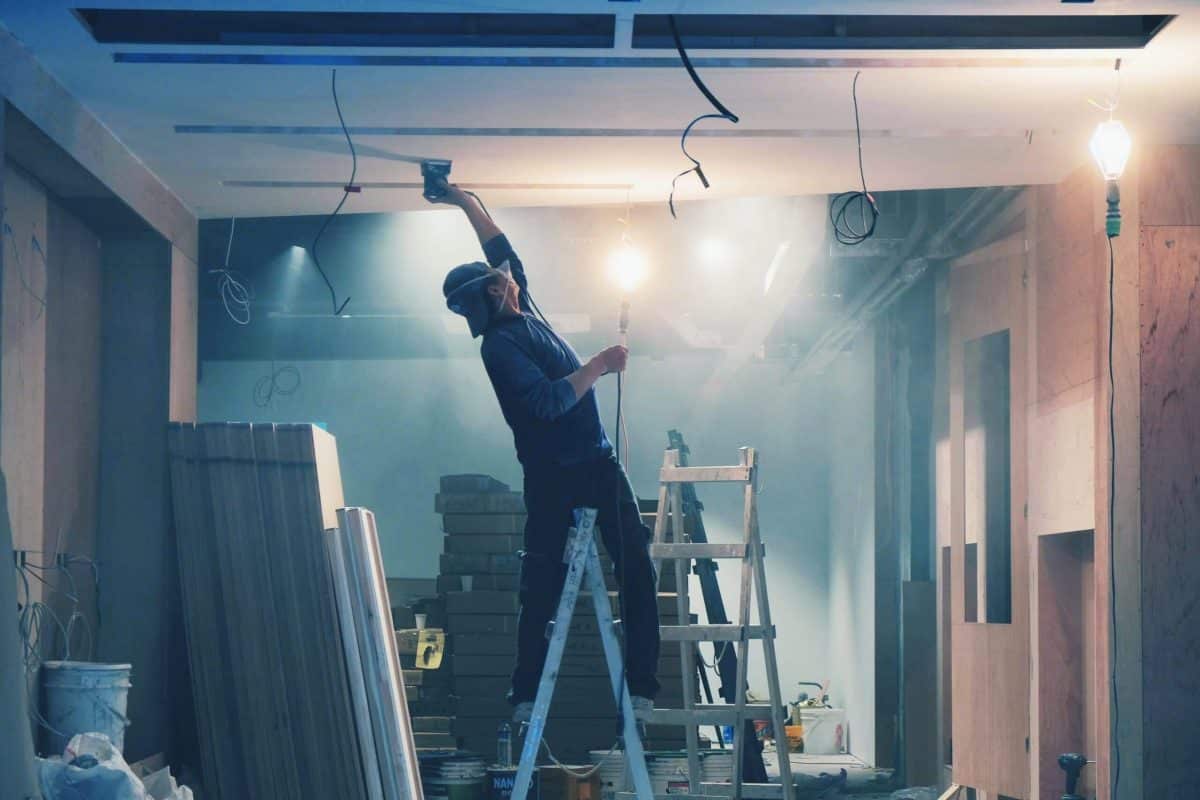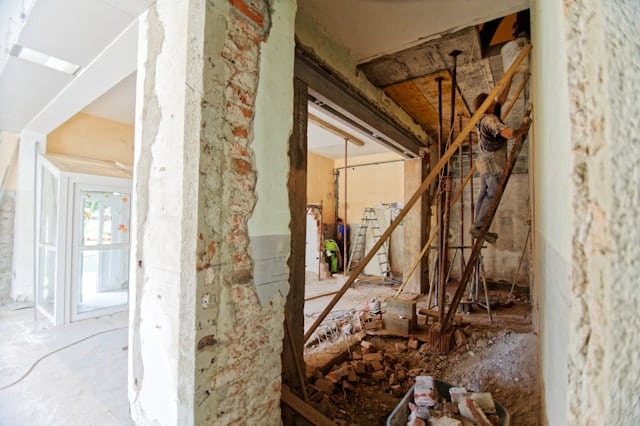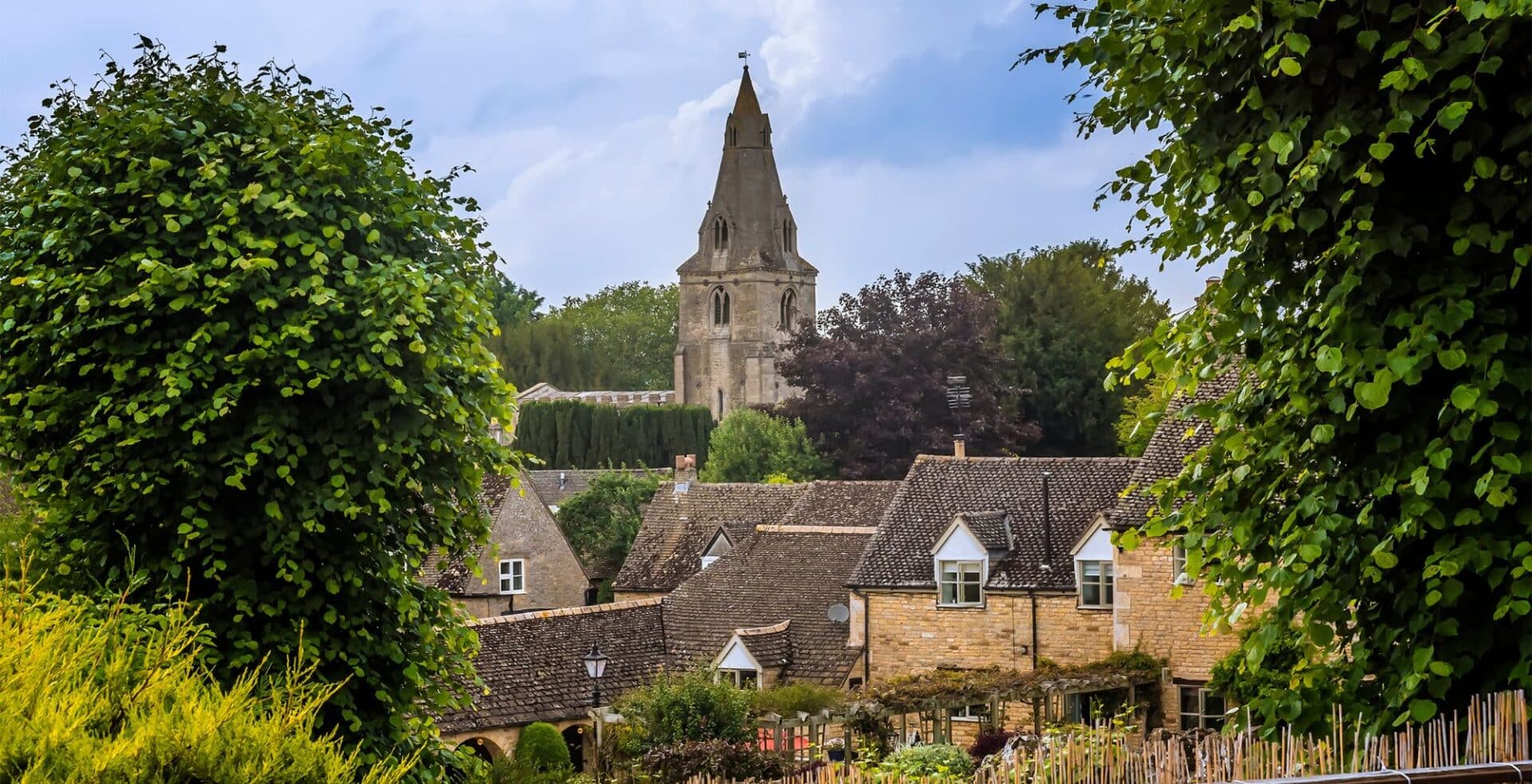As many self-builders fail to find the magic greenfield plot they seek, some turn instead to buying an existing house with a view to making considerable repairs, or choosing to replace it to build new.
In this article we cover:
- Is it better to renovate or build new?
- Pros and cons of each
- How to weight up your options
A substantial minority of self-builders – up to 40 per cent according to some studies* – buy an existing house rather than search even longer to try to find that perfect plot.
For one, there will be services which removes one more uncertainty from your early concerns although make sure to check the situation with wastewater treatment as this could prove to be a stumbling block, i.e. it may be expensive to upgrade the existing system in the case of an onsite treatment system, and the planners may have issues with you putting in a system on that particular site and may refuse permission on those grounds.
This route may also be the only way you can live in the rural setting of your choice, as the planners are more likely to grant permission if there’s a home already there. You may even be allowed to build a larger place than what you’ve removed.
Another plus is that there should be less risk in relation to digging the foundations for an extension or to replace with a larger dwelling as there is already a house there, i.e. the soil conditions should be ok although on some sites these can change within a few meters so nothing is certain on that front.
There are also those who already own a home, like its location, have nice neighbours and friends but have fallen out of love with the house itself. This leads them to consider very substantial alterations or taking it down and creating something from scratch.
Whichever of the two scenarios, the choices are then plain. Either upgrade the existing property or knock it down and replace it.

The case for repairing and/or extending
- Buying an existing house may be the only way you can live in the rural setting of your choice, subject to local planning regulations.
- Houses that need fixing (‘do-er uppers’) are cheaper than high quality, updated, homes. This gives a margin for spending and ending up with what you want yet not exceeding the local house price ceiling value.
- Older houses have character that can be hard or impossible to create in a new build.
- Older homes were built to last and the structure is usually solid.
- Some older homes are worth saving for their historical or cultural value. Such structures should not be demolished.
- Even homes that have no historical value should be retained if you want to reduce your environmental footprint as the waste generated by demolition and construction, as well as the embodied energy of buying new, are difficult to offset
- For many people, remodelling is the only way they can slowly (as they can afford to) create the home they need or want, perhaps over several years.
- If you do the work thoughtfully it’s possible to add value. For example, a building regulations compliant loft extension might cost forty thousand but add a hundred thousand to the value of your home in a good area.
The case for building new (replacement dwelling)
- It is usually cheaper to build from scratch than renovate or extend. You also won’t have to pay VAT on your work (NI only) so taking this into account, the larger your project the more sense it makes to build new rather than substantially refurb.
- The certainty of starting from a clean sheet of paper can give real peace of mind. This includes removing the risk associated with uncovering issues in an existing house that will lead to costly repairs. You then cut your coat according to your cloth from the start and sleep easily.
- Your new home will likely be more valuable than a similar-sized existing one in your area because it will have all the latest materials and kit. Also your bills will be lower as the latest materials and kit make it cheaper to run.
- You’ll have the fun and creativity of making a place that suits you and your family.
- You won’t need to worry about ageing materials, and the costly need to replace them later down the line, or worry about toxic materials if present (lead-based paints or asbestos for example).
Weighing up the options
With the pros and cons in mind, here are the questions to ask yourself when house hunting or when evaluating what to do with your current home.
- What’s worth saving and what will you need to replace when you move in? Heating, plumbing and electrics may need renewing unless they are fairly recent. Of course, it’s possible to live comfortably in a home full of outdated systems but starting from scratch enables you to have the best, safest, most comfortable, cost-effective, greenest, and money-saving kit from the start. Sometimes you won’t be able to replace like for like; due to changes in regulations the cost to replace could be higher than originally anticipated, e.g. rewiring the entire house may be a requirement. Remember that in ROI if you are doing a major renovation it’s likely you will have to upgrade the energy efficiency of your entire house to a B2 building energy rating, which will also have cost implications
- What is the extent of the design changes you would like to, or have to, make? If you need more space, do some simple scale drawings to scope out how extensive these extensions and alterations would be, to end up with the place you want. Then work with an architectural designer to create your ideal plan for such a project and cost it out in detail. You will find that building work on renovations and extensions tends to cost more than on new builds. And it can be very hard to budget accurately anyway as you never quite know what you’ll be up against until you start. Most people’s extensions and serious renovations involve the most expensive zones of their home…. kitchen, bathrooms, and better finishes. This makes extension costs much higher than overall house-building costs as the cost of the cheaper rooms (such as the hallways, storage areas, living rooms, etc.) isn’t factored in.
- What will the house be worth at the end? Given that the cost of actually building a house is pretty similar throughout NI and ROI, in high value areas it’s possible to recover the additional costs of building new because the embedded land values are high. In low value areas, though, a poor quality house and a high quality one cost much the same, so it usually makes sense to renovate rather than rebuild. But to expect your new build to become a profit centre can be unrealistic and dangerous. You are not a developer. How about restricting the size of your new build and putting the rest of the money away for something else?
It’s easy to get carried away and build too much or too expensively for your area. But remember too that a well-designed new build may well mean your new place doesn’t have to be much larger than your old one.
Many people say they don’t care about this…they just want what they want! Remember too that the three D’s of life – Death, Divorce and Debt – can hit any of us at any time and having overspent in an area where it’s impossible to recoup your money can make matters much much worse when Life takes a turn for the worse.
* That figure from a study by Potton; this statistic is likely to vary hugely depending on location. In rural areas most new self-builds go onto family lands which are greenfield sites, but the total factors in cities and suburbs
















